Ontario Resoles Redux
When we interviewed Mike Doody a few years ago, he had just launched his new company, Ontario Resoles. Since that day, Ontario Resoles has grown to be one of the premier climbing shoe resolers in Canada. We thought this was a good time to reconnect and discuss the changes that have gone on at Ontario Resoles, the challenges involved with running a climbing business during COVID, the addition of a climbing pro-shop and the persistent rumours of alien technology.
-

Ontario Resoles custom scum patch.
It's been some time since we initially chatted. Want to list some of the big changes that have taken place at Ontario Resoles since that conversation?
Mike: Over four years, and it has flown by! A lot has changed since then.
Back then, the resole shop was in my garage, and the team consisted of me – with some help from family.
Resoling started as a moonlight operation until it gained enough momentum to ditch my nine-to-five or, perhaps more accurately, until I had the courage.
Since then, I've brought on two more resolers, Cornelius in 2018 and Alan in 2019, making us a team of three. Since joining, they've become highly skilled at the craft and have made unique contributions to our process and our products. Having them onboard has been instrumental. Like myself, Alan and Cornelius are passionate climbers. I view this as essential. We've always been focused solely on climbing, and I think it shows.
Back then, the resole shop was in my garage, and the team consisted of me – with some help from family.
Resoling started as a moonlight operation until it gained enough momentum to ditch my nine-to-five or, perhaps more accurately, until I had the courage.
Since then, I've brought on two more resolers, Cornelius in 2018 and Alan in 2019, making us a team of three. Since joining, they've become highly skilled at the craft and have made unique contributions to our process and our products. Having them onboard has been instrumental. Like myself, Alan and Cornelius are passionate climbers. I view this as essential. We've always been focused solely on climbing, and I think it shows.
In recent years we've been trying to advance the idea of performance tuning rather than just repair.
Climbing shoes are a technical piece of athletic equipment, and repairing them in a way that maintains or improves performance requires an intimate knowledge of how they're used.
The shop has gone through a series of growth spurts as well: two different garages during the startup phase, a tiny industrial location with just enough room for the resole lab, and finally, just over a year ago, we moved into a larger unit with enough room for both the resole lab and a small retail space that we've been building out in conjunction with the online shop.
I am also proud to say that we’ve been certified by both Scarpa and La Sportiva as an officially authorized resoler.
The shop has gone through a series of growth spurts as well: two different garages during the startup phase, a tiny industrial location with just enough room for the resole lab, and finally, just over a year ago, we moved into a larger unit with enough room for both the resole lab and a small retail space that we've been building out in conjunction with the online shop.
I am also proud to say that we’ve been certified by both Scarpa and La Sportiva as an officially authorized resoler.
-
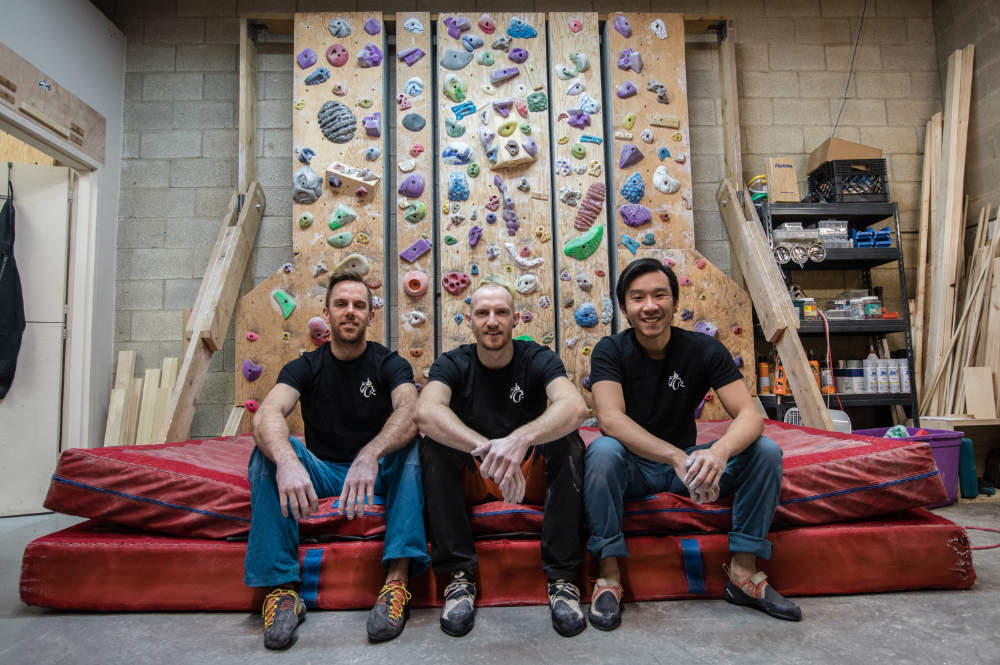
The team at Ontario Resoles.
Running a business during COVID must be difficult. What are some of the major challenges you've faced, and how have you dealt with them?
Mike: The climbing industry as a whole has been hit really hard by this, particularly in Canada, where for many climbers, gyms are the only option through the winter.
It is likely obvious that the biggest challenge is financial. Gyms have been closed or at severely reduced capacity for a very long time now, and people just aren't climbing as much as before COVID. This means less shoe wear and less resoling.
The first lockdown reduced our work volume dramatically, and I had no choice but to do temporary layoffs.
We've avoided layoffs during this second lockdown by reducing hours, but spring can't come soon enough.
Our mail-in customer base from other provinces has been growing, and we're doing online and curbside gear sales, but ultimately, like many other businesses, we're weathering the storm and eagerly awaiting better times.
Keeping up with the vague, sometimes contradictory, and constantly changing government regulations has also been challenging, especially for a business of our size.
On a positive note, I think the pandemic response has raised community awareness of just how vulnerable small businesses can be and how important it is to be thoughtful about your shopping habits. Climbers are increasingly concerned about putting their dollars into smaller Canadian companies that share their values. We had customers purchasing gift cards and even leaving tips to help us out, which was really heart-warming.
It is likely obvious that the biggest challenge is financial. Gyms have been closed or at severely reduced capacity for a very long time now, and people just aren't climbing as much as before COVID. This means less shoe wear and less resoling.
The first lockdown reduced our work volume dramatically, and I had no choice but to do temporary layoffs.
We've avoided layoffs during this second lockdown by reducing hours, but spring can't come soon enough.
Our mail-in customer base from other provinces has been growing, and we're doing online and curbside gear sales, but ultimately, like many other businesses, we're weathering the storm and eagerly awaiting better times.
Keeping up with the vague, sometimes contradictory, and constantly changing government regulations has also been challenging, especially for a business of our size.
On a positive note, I think the pandemic response has raised community awareness of just how vulnerable small businesses can be and how important it is to be thoughtful about your shopping habits. Climbers are increasingly concerned about putting their dollars into smaller Canadian companies that share their values. We had customers purchasing gift cards and even leaving tips to help us out, which was really heart-warming.
-
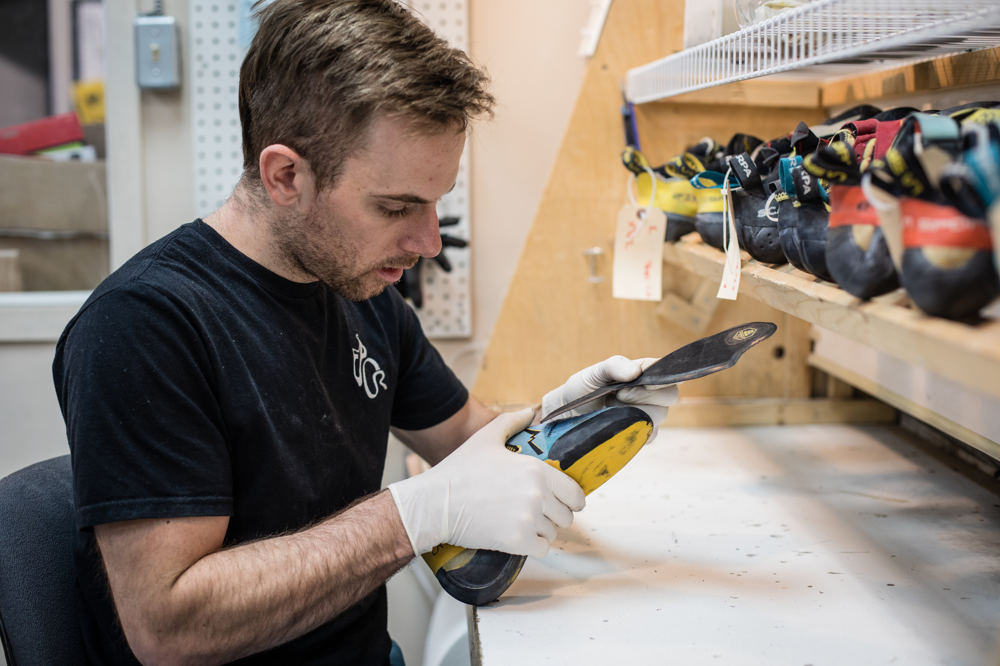
Mike Doody of Ontario Resoles.
When you started Ontario Resoles, you were employing some innovative resoling technology. I now hear that you're using even more advanced resoling techniques (there are rumours of alien tech). Can you briefly describe these innovations without angering our alien overlords?
Mike: We've always been secretive about our processes and equipment because we've specifically developed them in-house for our particular needs. There is no such thing as a climbing shoe resole school, so we've had to create our processes from the ground up. While I'd love to share more behind-the-scenes photos and show customers what goes into a resole, we're in this for the long haul and protecting our trade secrets has to take priority.
Although there haven't been any significant changes to our resoling process, it has definitely evolved over the years. And we continue to seek out any opportunity to improve quality or create a more efficient way of doing things. Over the years, we've made notable improvements in the quality and consistency of the bond between the sole and the shoe. We've also always put a lot of focus on maintaining the complex three-dimensional shape of the shoe, and I'm happy to say that made we've made improvements to this ability as well.
Although there haven't been any significant changes to our resoling process, it has definitely evolved over the years. And we continue to seek out any opportunity to improve quality or create a more efficient way of doing things. Over the years, we've made notable improvements in the quality and consistency of the bond between the sole and the shoe. We've also always put a lot of focus on maintaining the complex three-dimensional shape of the shoe, and I'm happy to say that made we've made improvements to this ability as well.
Our motivation here is to be a proper climbing gear shop, where you can walk in and get advice from someone who actually uses the products, or if you're already an expert, be treated as such.
In recent years we've been trying to advance the idea of performance tuning rather than just repair. The sole has the greatest impact on the shoe's performance, and this is especially true for soft shoes. We have several rubber compounds and thicknesses and the ability to add, remove, or modify the mid-sole of the shoe to modify its stiffness.
We've been offering some very use-specific tuning and modification options as well. We offer 'crack rands' that bring the rubber higher up on the top of the shoe. This modification provides more durability, comfort, and performance in jams.
Those who get a lot of abrasion wear at the toes can get more durability from an increased (targeted) thickness rand; we do this as a variable thickness rand, which is thickest at the maximal wear-point to avoid any unnecessary loss of sensitivity. We're also doing scum-patch replacements, and we can tailor these for abrasion resistance or toe-hook performance. For the latter, we use a very soft rubber and perforate it with small holes to provide excellent friction and sensitivity. We offer a heel rubber treatment that can significantly improve friction for heel hooks – this one is great for comp climbers. We've even done No-Edge conversions on Solutions and Miuras.
We've been offering some very use-specific tuning and modification options as well. We offer 'crack rands' that bring the rubber higher up on the top of the shoe. This modification provides more durability, comfort, and performance in jams.
Those who get a lot of abrasion wear at the toes can get more durability from an increased (targeted) thickness rand; we do this as a variable thickness rand, which is thickest at the maximal wear-point to avoid any unnecessary loss of sensitivity. We're also doing scum-patch replacements, and we can tailor these for abrasion resistance or toe-hook performance. For the latter, we use a very soft rubber and perforate it with small holes to provide excellent friction and sensitivity. We offer a heel rubber treatment that can significantly improve friction for heel hooks – this one is great for comp climbers. We've even done No-Edge conversions on Solutions and Miuras.
-
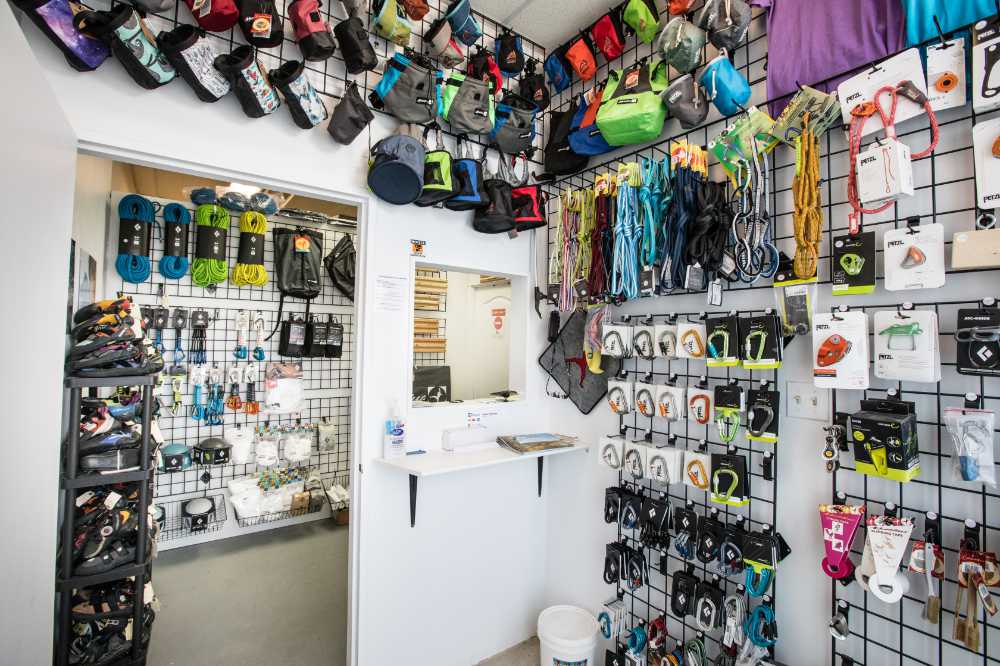
Ontario Resoles retail shop.
Earlier, you mentioned that you now have a retail and online store. Can you tell us about the physical space and list some of the product categories and specific products you're carrying?
Mike: We're stoked about the new retail space! We describe it as intimate. The actual retail space is a relatively small shop at the front of the resole lab, but we have a lot of products packed in there, and we're still adding new stock. We already have a wide selection of the basics – biners, slings, draws, training tools, chalk and chalk bags, as well as crash pads. We have a rotating stock of resoled-and-resold shoes that are a budget-friendly way to get shoes with brand new rubber and a warranty-backed resole.
As spring nears, we're filling in the gaps and bringing in additional gear, including harnesses, helmets, new shoes, and a wider selection of ropes. Customer input is important, and we always welcome suggestions on what climbers want to see on our shelves.
Our motivation here is to be a proper climbing gear shop, where you can walk in and get advice from someone who actually uses the products, or if you're already an expert, be treated as such. There's a lot to be lost in a world of one-click instantaneous drone-delivery shopping. With that said, we do offer online shopping as well, with Canada-wide shipping.
As spring nears, we're filling in the gaps and bringing in additional gear, including harnesses, helmets, new shoes, and a wider selection of ropes. Customer input is important, and we always welcome suggestions on what climbers want to see on our shelves.
Our motivation here is to be a proper climbing gear shop, where you can walk in and get advice from someone who actually uses the products, or if you're already an expert, be treated as such. There's a lot to be lost in a world of one-click instantaneous drone-delivery shopping. With that said, we do offer online shopping as well, with Canada-wide shipping.
-
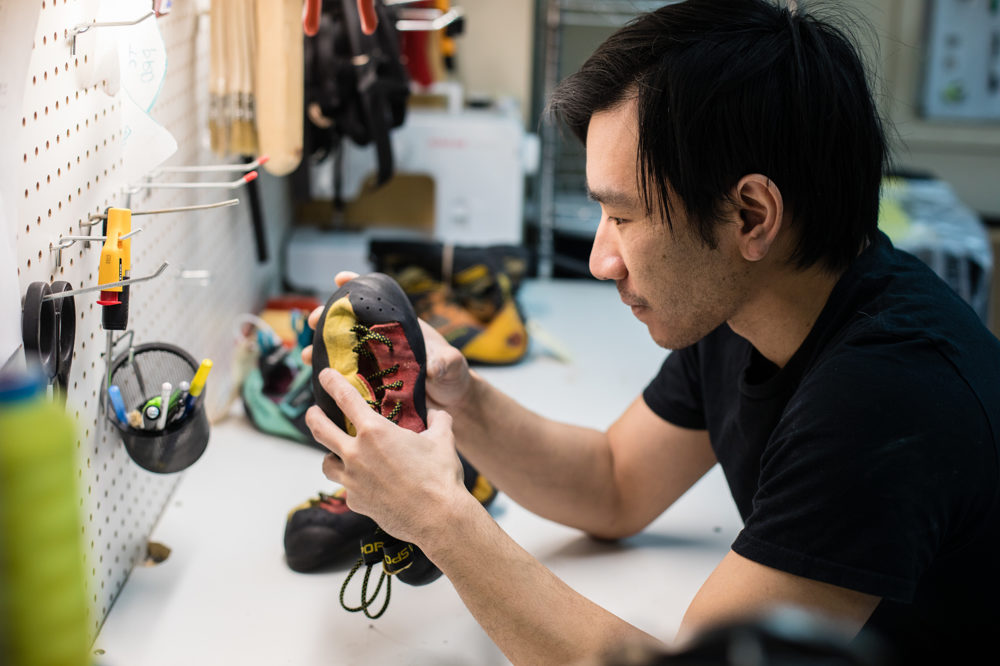
Alan of Ontario Resoles.
I noticed that you're building a new minimalist training board. Can you give us some details about the board and explain why you started this project?
Mike: These boards were an idea we had been talking about for a while, and with the big drop in shoe-resole volume, the time was right to begin development. We're offering a few different models and price-points, but the basic idea is a high-quality hand-crafted board without any gimmicks or distractions.
The biggest factors determining how much a climber gains from hangboarding are frequency of use, increasing the load/resistance systematically and avoiding injury. We believe that a simple board with just enough edge depths will allow repeatable, methodical progression. And you won't be wasting your time with holds that aren't giving as much return on investment. With that said, our boards are designed with advanced climbers in mind as well. The rungs are shaped to allow everything from four-finger edge to mono training, and if the smallest rung (12 mm) isn't small enough, the boards can be paired with a set of edges.
The biggest factors determining how much a climber gains from hangboarding are frequency of use, increasing the load/resistance systematically and avoiding injury. We believe that a simple board with just enough edge depths will allow repeatable, methodical progression. And you won't be wasting your time with holds that aren't giving as much return on investment. With that said, our boards are designed with advanced climbers in mind as well. The rungs are shaped to allow everything from four-finger edge to mono training, and if the smallest rung (12 mm) isn't small enough, the boards can be paired with a set of edges.
-
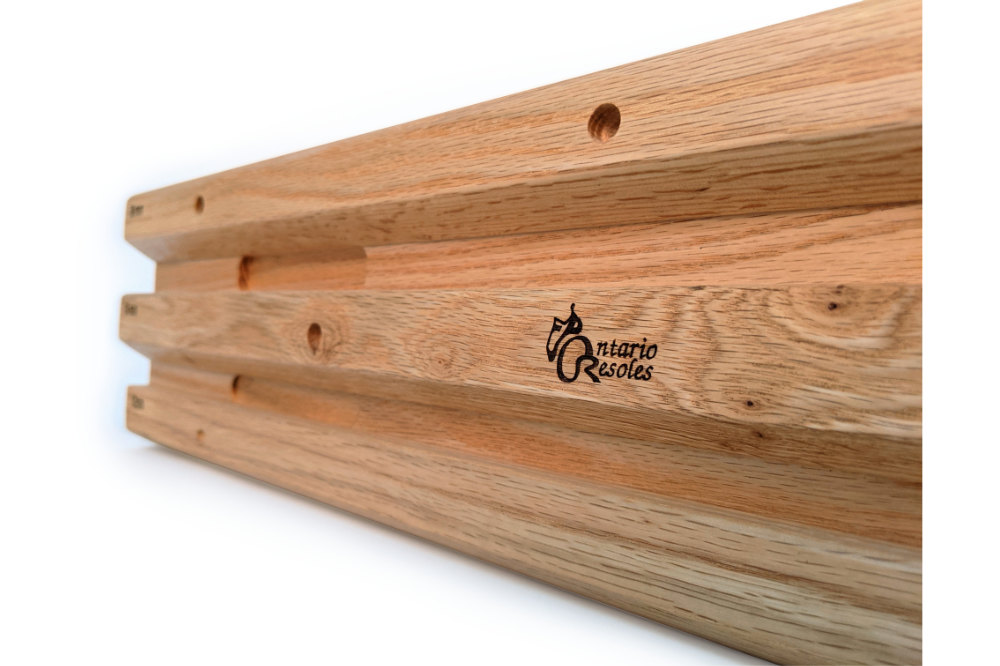
Ontario Resoles Straight Edge+ Hangboard.
-
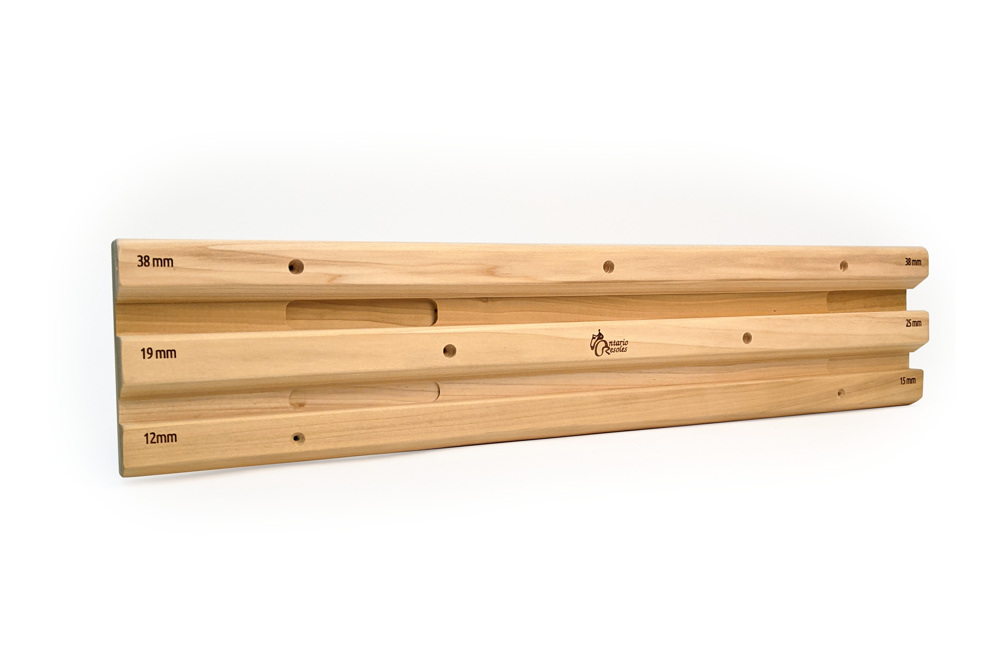
Ontario Resoles Straight Edge+ Hangboard.
Any other new projects coming down the pike? Products? Resoling?
Mike: We're working on something, but it's a little too soon to drop any hints on that just yet. Stay tuned!
We're working on some new pinches and edge sizes in the training line, and we just made some changes to our engraving process for the hangboard logos. We're now offering an option of having a custom message laser engraved on the bottom rung of our hangboards. I'm partial to "You suck, try harder."
We're working on some new pinches and edge sizes in the training line, and we just made some changes to our engraving process for the hangboard logos. We're now offering an option of having a custom message laser engraved on the bottom rung of our hangboards. I'm partial to "You suck, try harder."
-
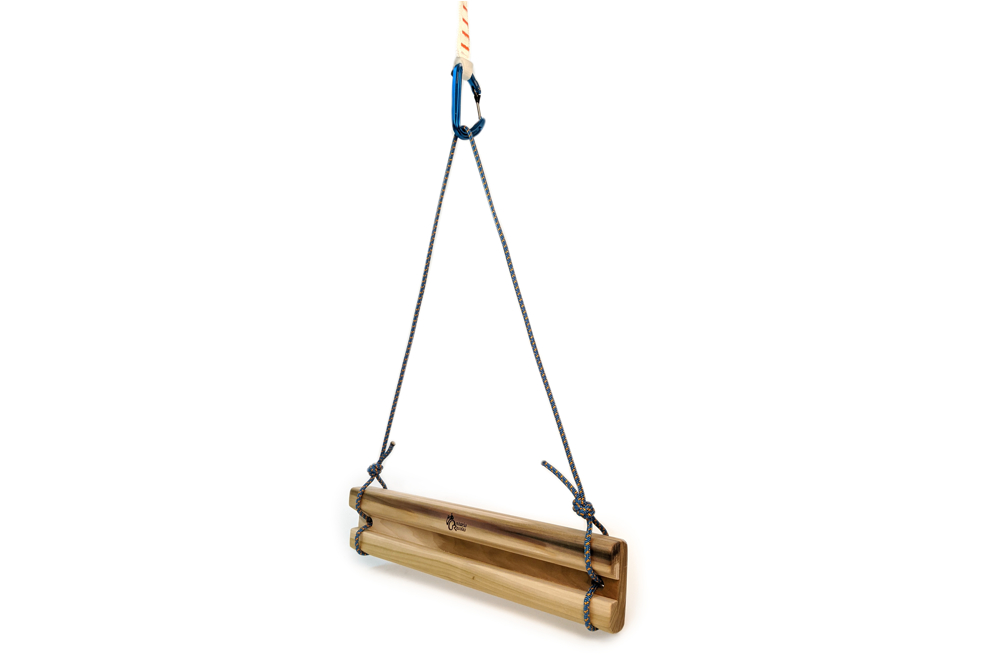
Ontario Resoles Cragboard Portable Hangboard
Now that you've been resoling for a few years, have you noticed any climbing footwear trends?
Mike: Yeah – black is the new orange. Were you hoping for more technical insights?
In short, specificity. The recent focus on comp-specific shoes has been one that we've noticed, and not just for boulder comps either. We're now starting to see speed-specific shoes too. Designers continue to find ways of making shoes even more three-dimensional through clever rubber tensioning, moulded components, and complex mid-sole shapes.
Scum patches are getting softer and bigger. Toe hooks are often very low-load, meaning there isn't much force pushing the top of the foot against the hold. Soft rubbers generally offer better friction in that scenario. The larger scum patch means that you can rotate your hip more without losing rubber contact in a flag, scum, or toe hook.
Rubber technology continues to quietly push climbing shoes forward. Many manufacturers are working directly with rubber producers to dial in their own proprietary compounds and gain a competitive advantage.
In short, specificity. The recent focus on comp-specific shoes has been one that we've noticed, and not just for boulder comps either. We're now starting to see speed-specific shoes too. Designers continue to find ways of making shoes even more three-dimensional through clever rubber tensioning, moulded components, and complex mid-sole shapes.
Scum patches are getting softer and bigger. Toe hooks are often very low-load, meaning there isn't much force pushing the top of the foot against the hold. Soft rubbers generally offer better friction in that scenario. The larger scum patch means that you can rotate your hip more without losing rubber contact in a flag, scum, or toe hook.
Rubber technology continues to quietly push climbing shoes forward. Many manufacturers are working directly with rubber producers to dial in their own proprietary compounds and gain a competitive advantage.
-
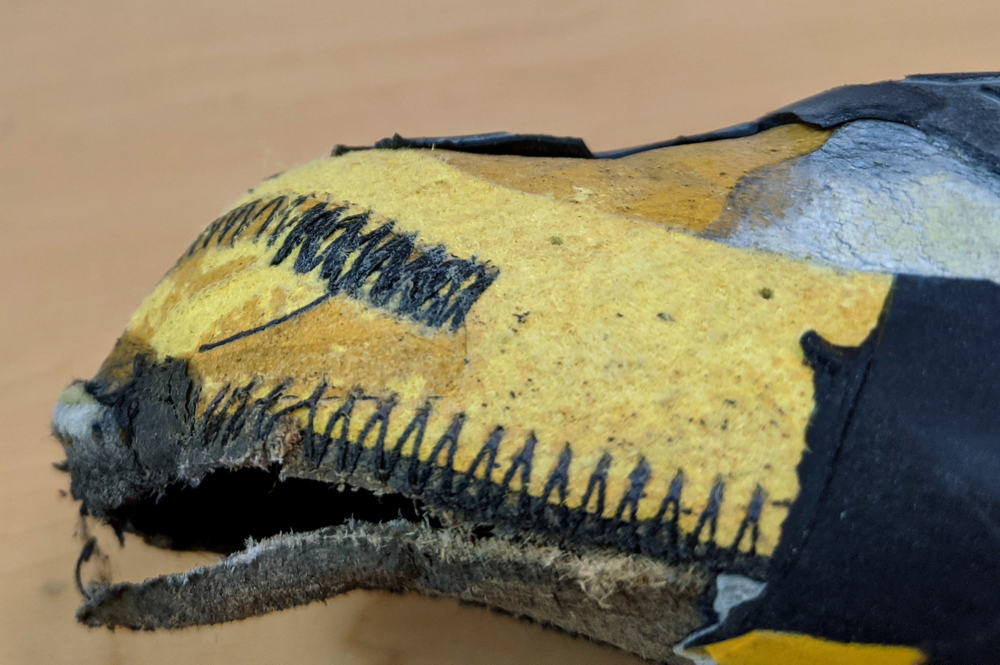
A climbing shoe beyond repair.
Any advice on how climbers can extend the life of their climbing shoes?
Mike: Absolutely. The number one factor is how you care for your shoes. For many of the shoes, we give the dreaded IRR (irreparable) stamp. The issue is that the basic structural material of the shoe has deteriorated. These shoes likely could have seen a few more resoles with better care.
Nobody likes to talk about it, but we all sweat, and we're all shedding dead skin cells into our climbing shoes. This process creates a moist and salty environment inside the shoe with a PH imbalance (acidity) that encourages bacteria and fungus growth. This environment directly shortens the shoes' life and is the culprit of the notorious climbing shoe stank. Stitching weakens and rots, the material degrades, and leather becomes hard and brittle, cracking or splitting with use.
Moisture is relatively easy to take care of; just let the shoes air-dry after every session. Clip them to the outside of your pack rather than burying them at the bottom to fester. There are also shoe inserts available that do a great job at absorbing moisture and odour – we use, recommend, and sell Boot Bananas.
The other issues are taken care of with occasional gentle washing. Gentle being the key. If you use hot water, too much detergent, or other harsh chemicals, you could be doing more damage than good. During the cleaning process, it's helpful to use an old toothbrush to remove any buildup inside the shoe.
Aside from that, don't leave the shoes in your hot car in the summer or your frozen car in the winter. And don't walk around the gym or crag with the heels of your shoes flattened and squashed under your foot – this ruins the shape that you paid good money for and makes your local resoler cringe.
Nobody likes to talk about it, but we all sweat, and we're all shedding dead skin cells into our climbing shoes. This process creates a moist and salty environment inside the shoe with a PH imbalance (acidity) that encourages bacteria and fungus growth. This environment directly shortens the shoes' life and is the culprit of the notorious climbing shoe stank. Stitching weakens and rots, the material degrades, and leather becomes hard and brittle, cracking or splitting with use.
Moisture is relatively easy to take care of; just let the shoes air-dry after every session. Clip them to the outside of your pack rather than burying them at the bottom to fester. There are also shoe inserts available that do a great job at absorbing moisture and odour – we use, recommend, and sell Boot Bananas.
The other issues are taken care of with occasional gentle washing. Gentle being the key. If you use hot water, too much detergent, or other harsh chemicals, you could be doing more damage than good. During the cleaning process, it's helpful to use an old toothbrush to remove any buildup inside the shoe.
Aside from that, don't leave the shoes in your hot car in the summer or your frozen car in the winter. And don't walk around the gym or crag with the heels of your shoes flattened and squashed under your foot – this ruins the shape that you paid good money for and makes your local resoler cringe.
-
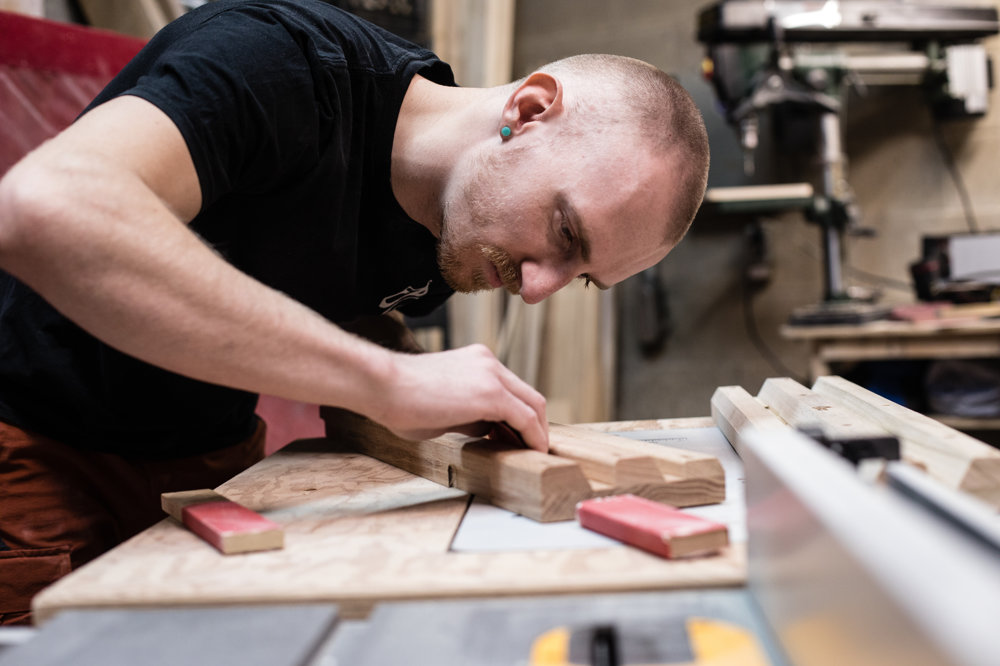
Cornelius of Ontario Resoles.
And finally, what's the first climbing area you plan to visit when you can travel out of the country?
Mike: That's a good question. It's hard to say when that might be, and where I'll go will depend on when travel becomes an option. The usual spring RRG trip might not be an option. I've got my fingers crossed for the fall. I'm cautiously hopeful that a fall road trip to New Brunswick will be feasible. Going through the States could mean hitting the Daks, Rumney, Cathedral Ledge, and maybe even Acadia on the way.
You can find out more about Ontario Resoles at www.ontarioresoles.ca.
Join the discussion of this and other climbing related stories at www.ontarioclimbing.com/forum/
Join the discussion of this and other climbing related stories at www.ontarioclimbing.com/forum/












